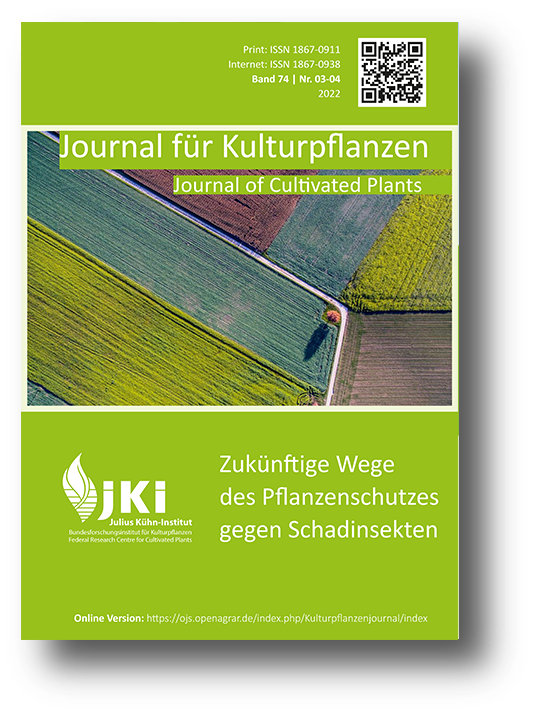Attract, confuse, repel: Basics of visual perception and possibilities of optical manipulation of insect pests
DOI:
https://doi.org/10.5073/JfK.2022.03-04.02Keywords:
Host plant detection, wavelength-specific behaviour, colour vision, integrated pest management, biological plant protection, aphids, whitefliesAbstract
The optical manipulation of insect pests, together with other preventive measures, forms the basis for integrated crop protection systems. The manipulation of the visual perception makes it more difficult for insects to find their hosts and thus reduces the infestation rate. Particularly in the case of insects with high reproduction rates, the reduction in initial infestation can already be decisive for keeping below later damage thresholds. The basis for this lies in the visual ecology of insects and their visual perception and subsequent behaviour. The approaches to optical manipulation that emerge from this perception range from the use of contrast effects to coloured traps and the use of repellent materials. Developments in the field of light-emitting diodes have also made it possible to use narrow-band light for optical manipulation. Current methods of optical manipulation and their possible applications are described using examples.
Downloads
Published
Issue
Section
License
Copyright (c) 2022 Niklas Stukenberg, Jan-Uwe Niemann

This work is licensed under a Creative Commons Attribution 4.0 International License.
The content of the journal is licensed under the Creative Commons Attribution 4.0 License. Any user is free to share and adapt (remix, transform, build upon) the content as long as the original publication is attributed (authors, title, year, journal, issue, pages).
The copyright of the published work remains with the authors. The authors grant the Journal of Cultivated Plants, the Julius Kühn-Institut and the OpenAgrar repository the non-exclusive right to distribute and exploit the work.







